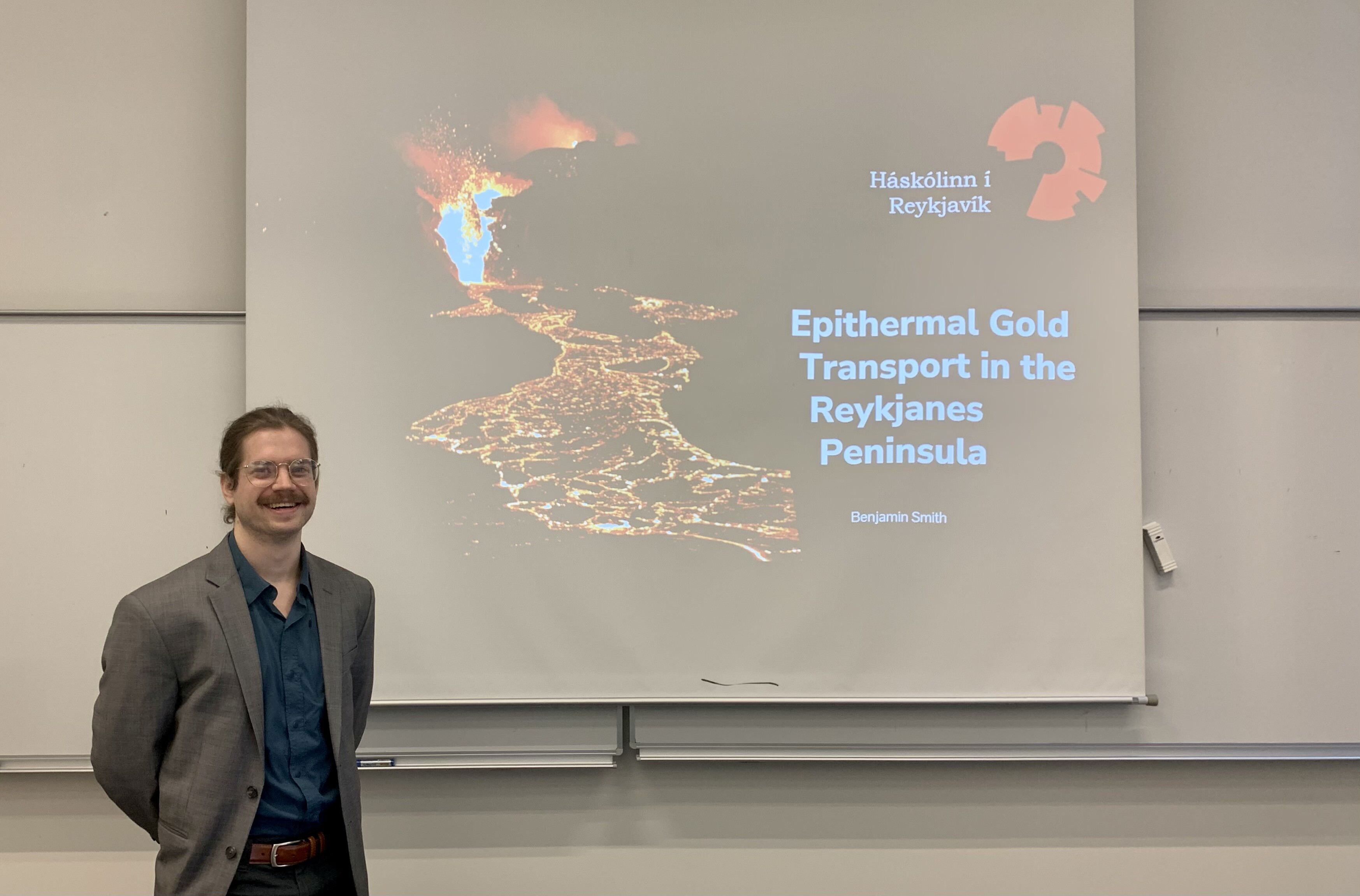MSc Thesis: Gold Transport through the epithermal system in the Reykjanes Peninsula
REYKJAVIK, January 21 - MSc in Sustainable Energy candidate, Benjamin Smith, successfully defended his master's thesis where he investigates gold transport through the epithermal system in the Reykjanes Peninsula. Ben's work was supervised by Dr. Juliet Newson from Reykjavik University and Dr. Guðrún Sævarsdottir from Reykjavik University. Examination was conducted by Dr. Iwona Galeczka, Geochemist at Iceland GeoSurvey.

Abstract:
Significant quantities of gold have been found in scale deposits along geothermal production pipes in the Reykjanes Peninsula. Gold concentrating effects found in the Trans-Atlantic Geo-traverse seem to have a similar mechanism as Reykjanes system; porphyries begin the initial concentration and gold is carried closer to the surface through sulfur compounds. This study aims to better define and understand the chemical reactions that influence the transportation and deposition of gold in epithermal systems. Specifically, to understand the chemical path of the fluid as it travels through a porous media. The chemistry of gold in epithermal systems is much researched. This study is an initial investigation into phyiscochemical modeling of epithermal gold transport and deposition. As such, this project investigates the path of gold in a wellbore and through porous media.
To test the hypothesis that gold is carried and deposited by sulfur complexes in this epithermal system, three programs are used to model the evolution of the chemistry. The initial step is to understand the thermodynamics of the wellbore by coding a simulation based on HOLA. The next problem is to understand the reservoir equilibrium chemistry based on the measured element concentrations through simulations in PHREEQC. In addition to this, PHREEQC was planned to be used to simulate the deposition of minerals and gold in the wellbore, however, the degassing of CO2 could not be simulated. Finally, the reservoir chemistry is used in the program TOUGHReact. Flow through a porous media is simulated as it travels to the surface from depth. The results of these simulations confirm the mechanism of gold transportation and gives estimates for when gold will start to deposit from a steady state. In this case the gold is deposited from hydrosulfidogold, Au(HS)2 -, as boiling causes increased concentrations and a rise in pH. Epithermal systems are typically in the upper kilometer of hydrothermal systems which are the main areas of gold deposits due to a reduced pressure that causes both boiling and interaction with meteoric water.
Results confirmed the mechanism for gold deposition and transportation in the Reykjanes system. Furthermore, this research gives insight into what mechanisms play a role in the deposition of gold. Through hydrosulfidogold reactions gold deposition was successfully simulated in the program. Geothermal projects can benefit from added revenue streams, and some geothermal projects can utilize the high concentrations lithium in the geothermal brine for profit. This research could prove useful to find natural gold deposits or help develop methods to extract gold from the geothermal solution during production.
Congratulations Ben on an excellent thesis defense!
